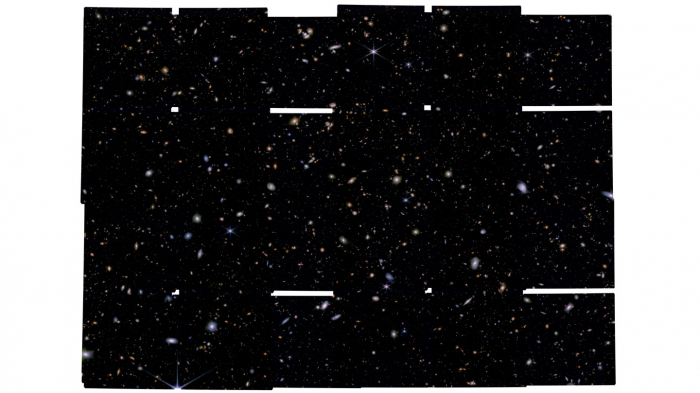These “dark stars” are still hypothetical. Their identification in JWST images is far from certain. But if any of the three candidates — reported in the July 25 Proceedings of the National Academy of Sciences — turn out to be this new type of star, they could offer a glimpse of star formation in the early universe, hint at the nature of dark matter and possibly explain the origins of supermassive black holes.
First proposed in 2007 by cosmologist Katherine Freese and colleagues, dark stars might have been some of the first types of stars to form in the universe (SN: 1/1/08). Though dark stars have yet to be observed, they’re thought to be powered by heat from dark matter interactions rather than by nuclear fusion reactions like in the sun.
Dark stars “would be very weird looking,” says Freese, of the University of Texas at Austin. The hypothetical stars would have formed from clouds of hydrogen and helium that drew in locally abundant dark matter as they coalesced. Though the true nature of dark matter isn’t known — its presence is inferred largely via its effect on how stars move within galaxies — it’s possible that dark matter particles can interact with themselves, annihilating each other when they collide and producing vast amounts of light and heat (SN: 7/7/22). That heat would keep the cloud of hydrogen and helium from condensing into a dense, hot core like the stars that exist today.
Because the heat from dark matter annihilations would keep the gas cloud from condensing, dark stars could grow to gargantuan size. Theoretically, dark stars could be 10 times as wide as Earth’s orbit around the sun. They could also be millions of times as massive as the sun and shine billions of times brighter — bright enough, potentially, to be spotted by JWST.
To see if any dark stars are lurking in data from the orbiting observatory, Freese and colleagues pored over images from a JWST survey of early galaxies. In such images, JWST has so far discovered over 700 objects that may have originated in the first few hundred million years of the universe — the epoch when dark stars would have emerged (SN: 12/16/22). Light from these remote objects is stretched, or redshifted, as the universe expands. So Freese and colleagues zeroed in on four objects already confirmed to be highly redshifted, making them some of the oldest objects seen to date.
Those objects are currently thought to be small galaxies from the universe’s relative infancy. But because they’re so far away, JWST can’t resolve them well enough to determine whether they’re actually galaxies or large, ultrabright stars, the researchers say.
More about:
















































